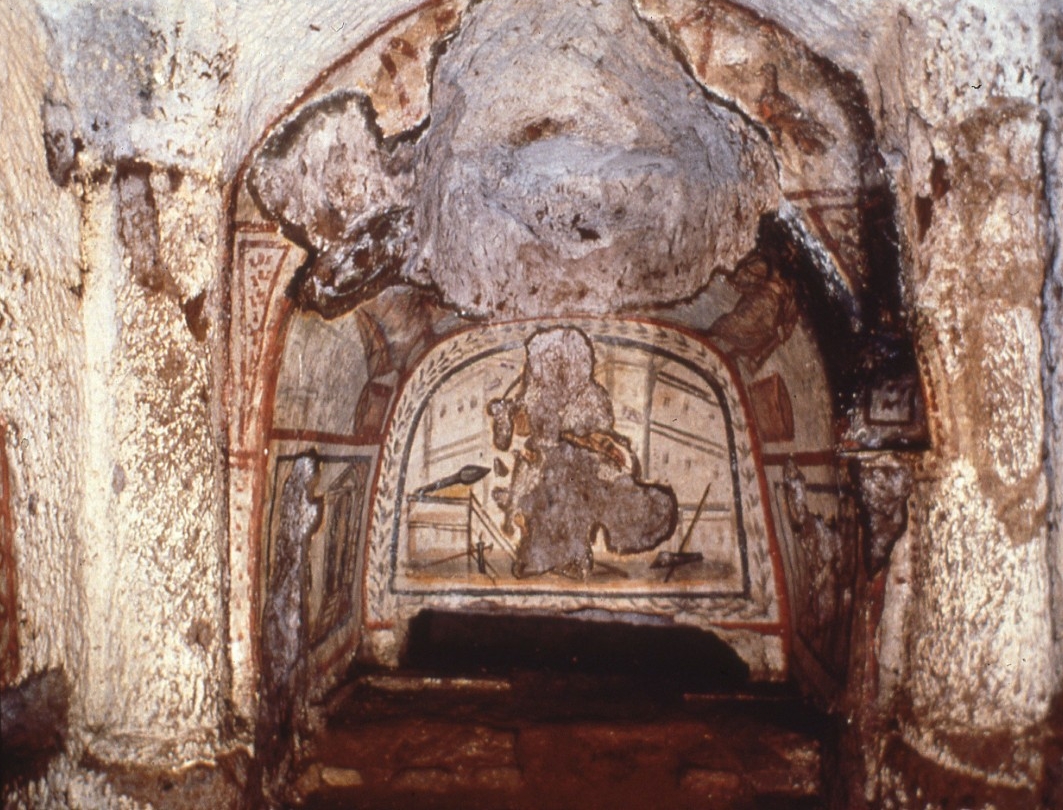Catacomb of Domitilla

The cubicle of the Diogenes ditch is a square plan hypogeum with a cross vault, supported at the four corners by columns consisting of a base, shaft and capital, all of which were made by excavating the tuffaceous bank. In the wall of the northern side, an arcosolium was carved, then plastered and painted, with the burial niche at its base; on the eastern side, between the arcosolium and the column, a small niche was carved with a marble slab at its base. Along the eastern wall, a second room has been created with a simple lime plastering.
Based on the painting technique and the general chronology of the catacomb, it is believed that the paintings date back to the second half of the 4th century AD. The outer front is 1.9 m long and 2.3 m high, the four columns, with a diameter of 0.4 m, are approximately 2 m high, while the arcosolium, approximately 1 m deep, is 1.7 m wide by 1.5 m high.
The pictorial decoration is articulated as follows:
Upper register with Peter represented on the left side and Paul on the right side. Lower register with Jesus raising Lazarus from the tomb on the left side and Moses causing water to gush from a rock on the right side.
On the front is a dove between olive branches, in the centre are the remains of the cartouche, while between the columns and the arcosolium are two pilasters decorated with geometric motifs within panels.
The current state of conservation of the cubicle is linked to a series of events dating back to the 1600s, at the time of the rediscovery of certain regions of the Domitilla Catacombs. In particular, among others, Marcantonio Boldetti's attempt to remove the paintings in order to museum them, an intervention that resulted in the irreparable loss of part of the pictorial cycle, leaving an enormous structural lacuna in the centre of the arcosolium that extends to affect a portion of the front and three lacunae on the painted plasterwork of the lunette and intrados.
A portion of the painting of the Diogenes fossor, face and part of the bust, is preserved in the Vatican Museums, Belvedere Corridor, Christian Museum.


